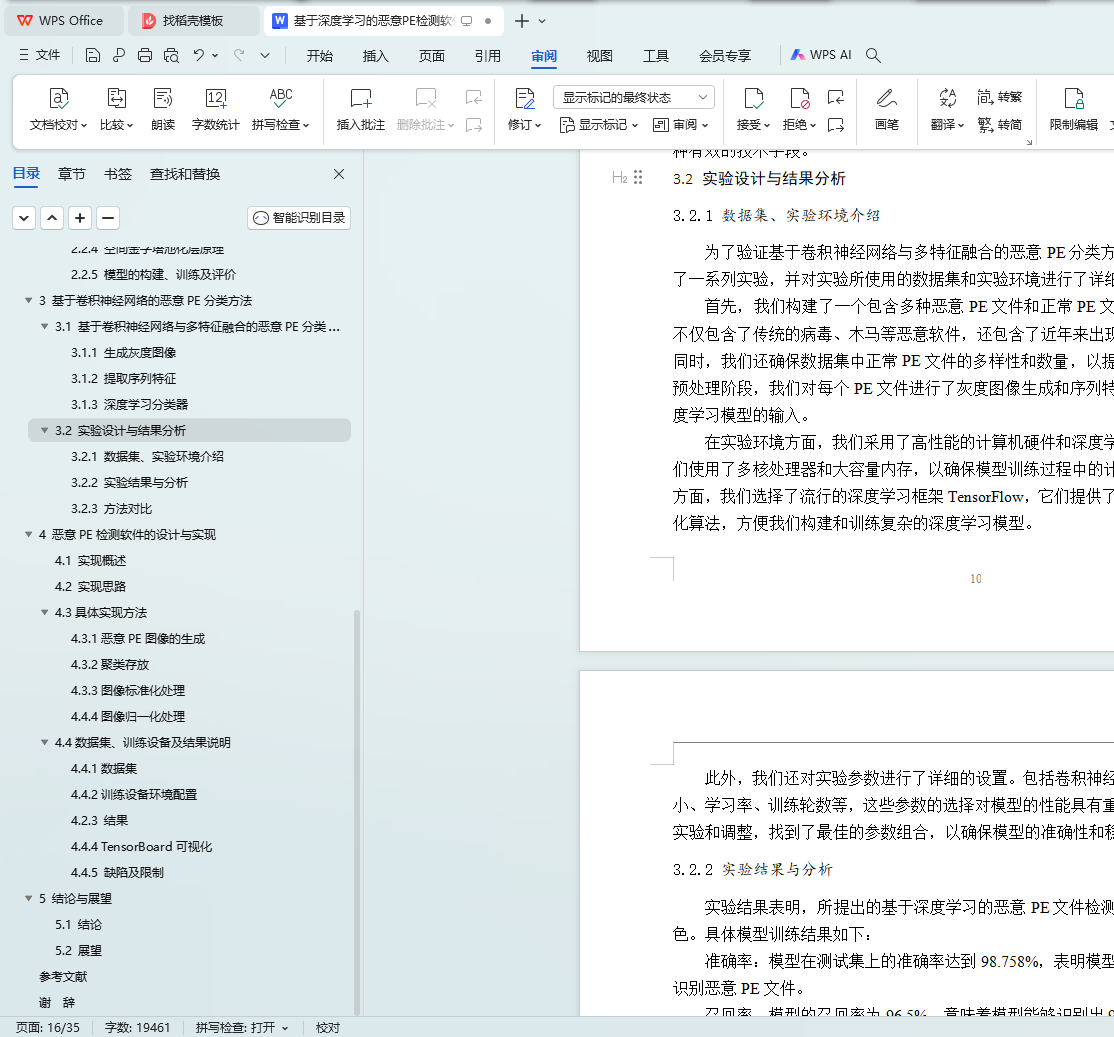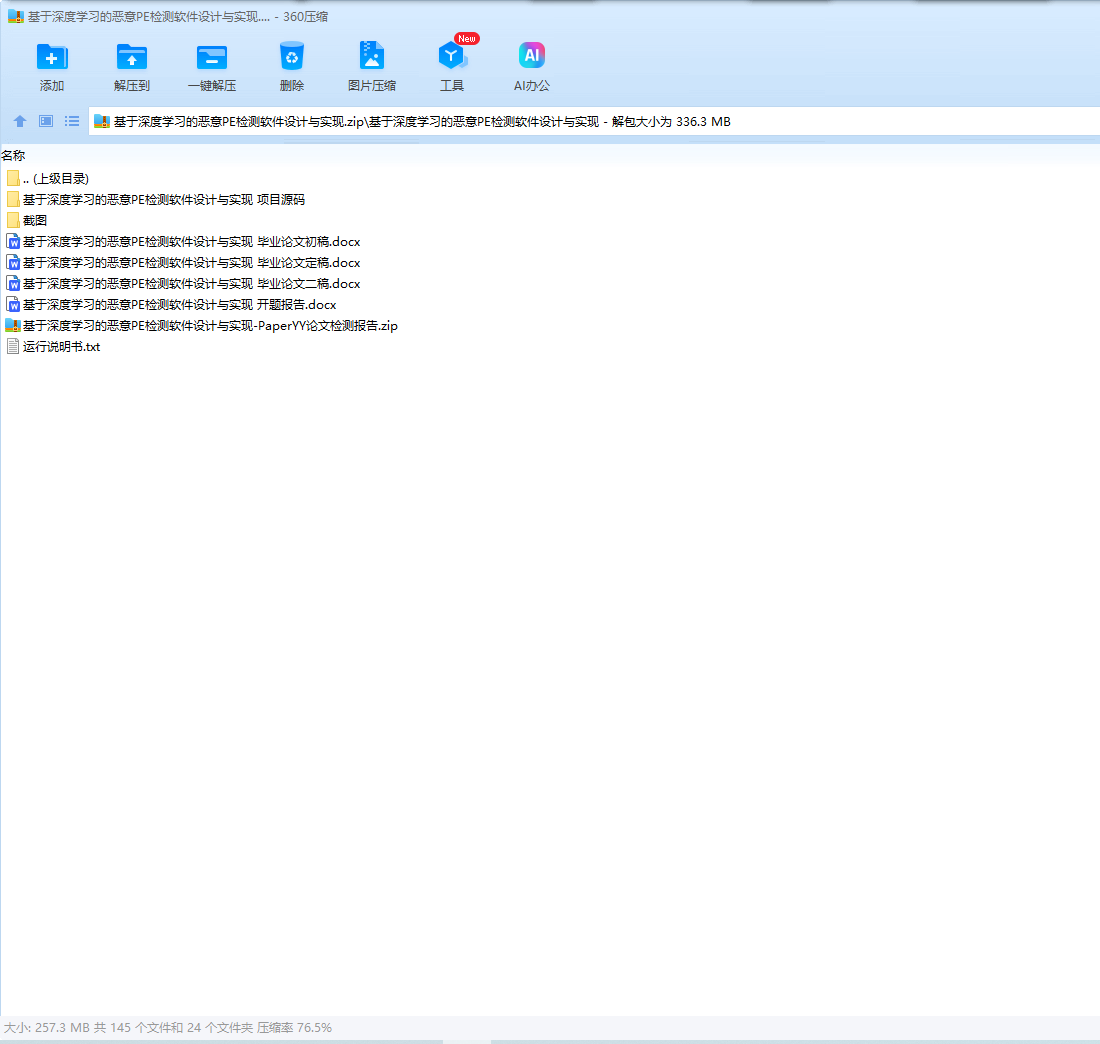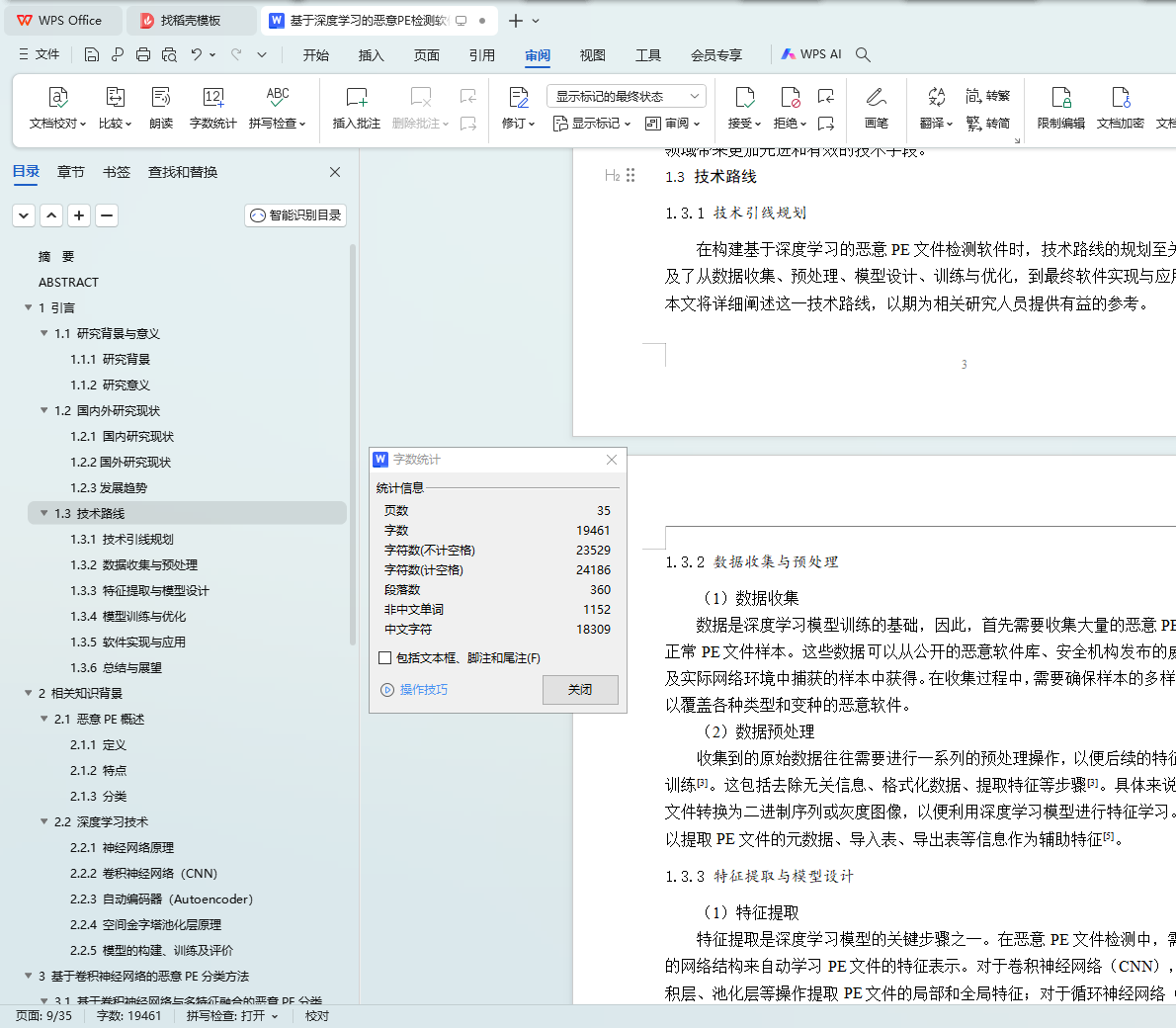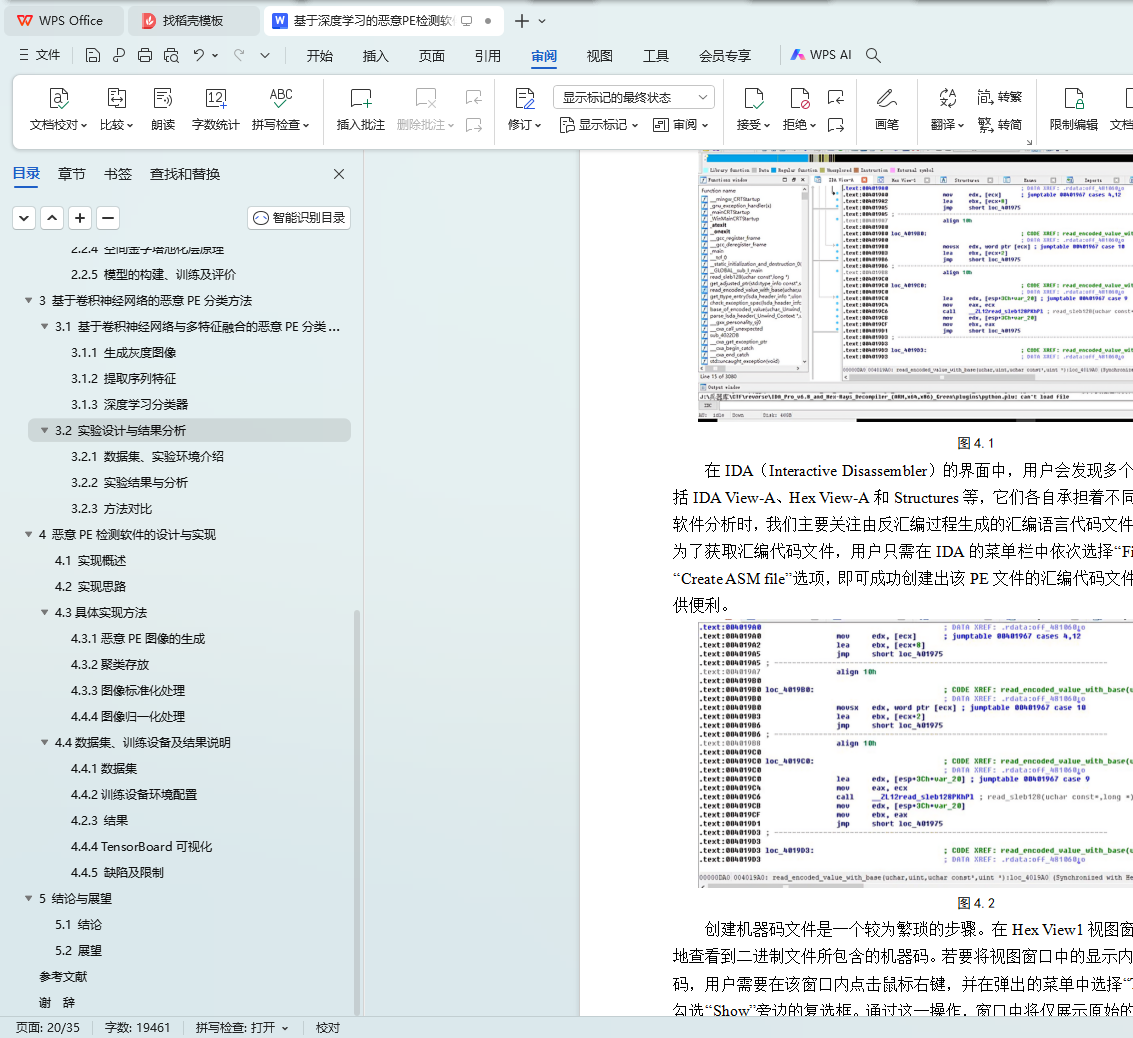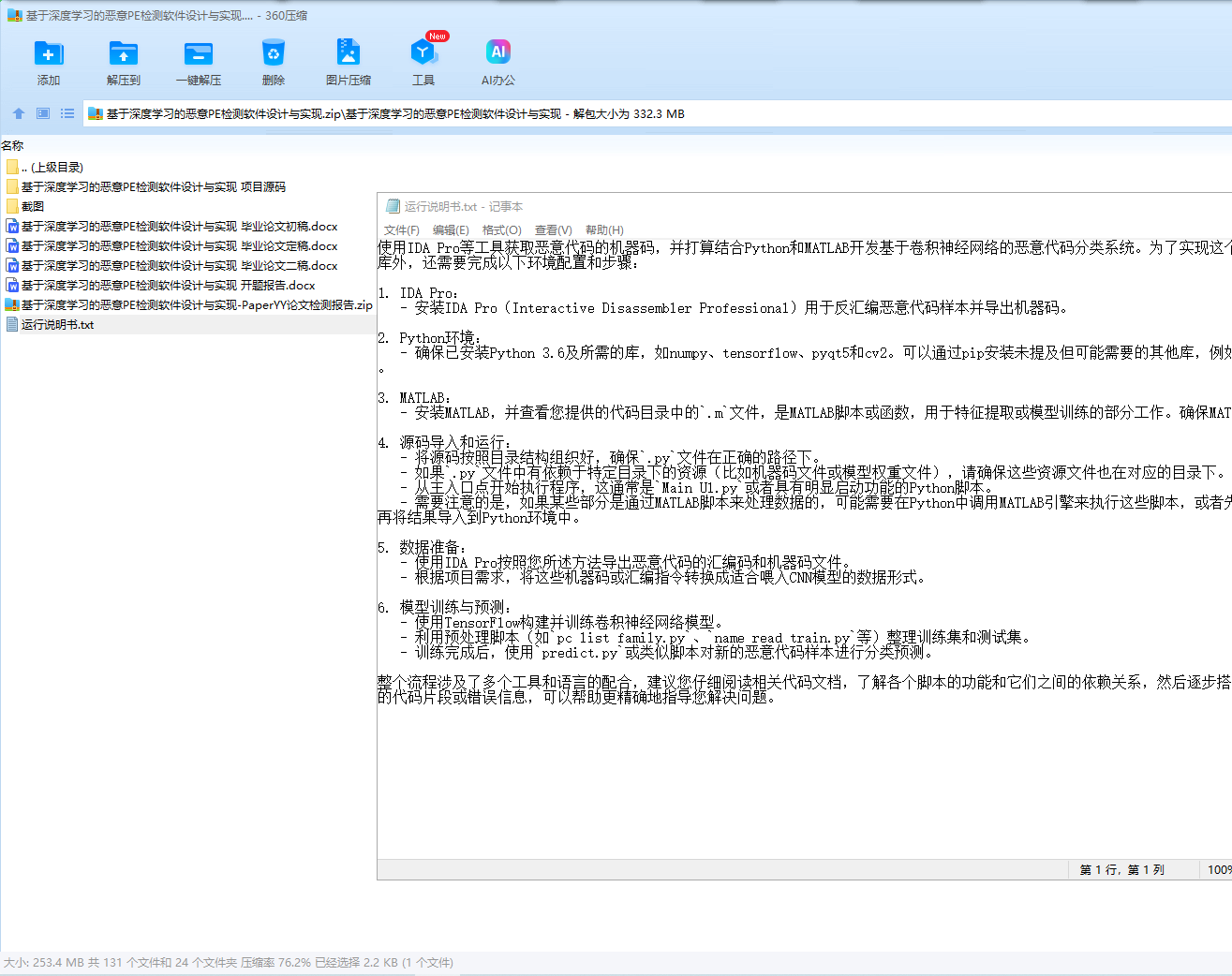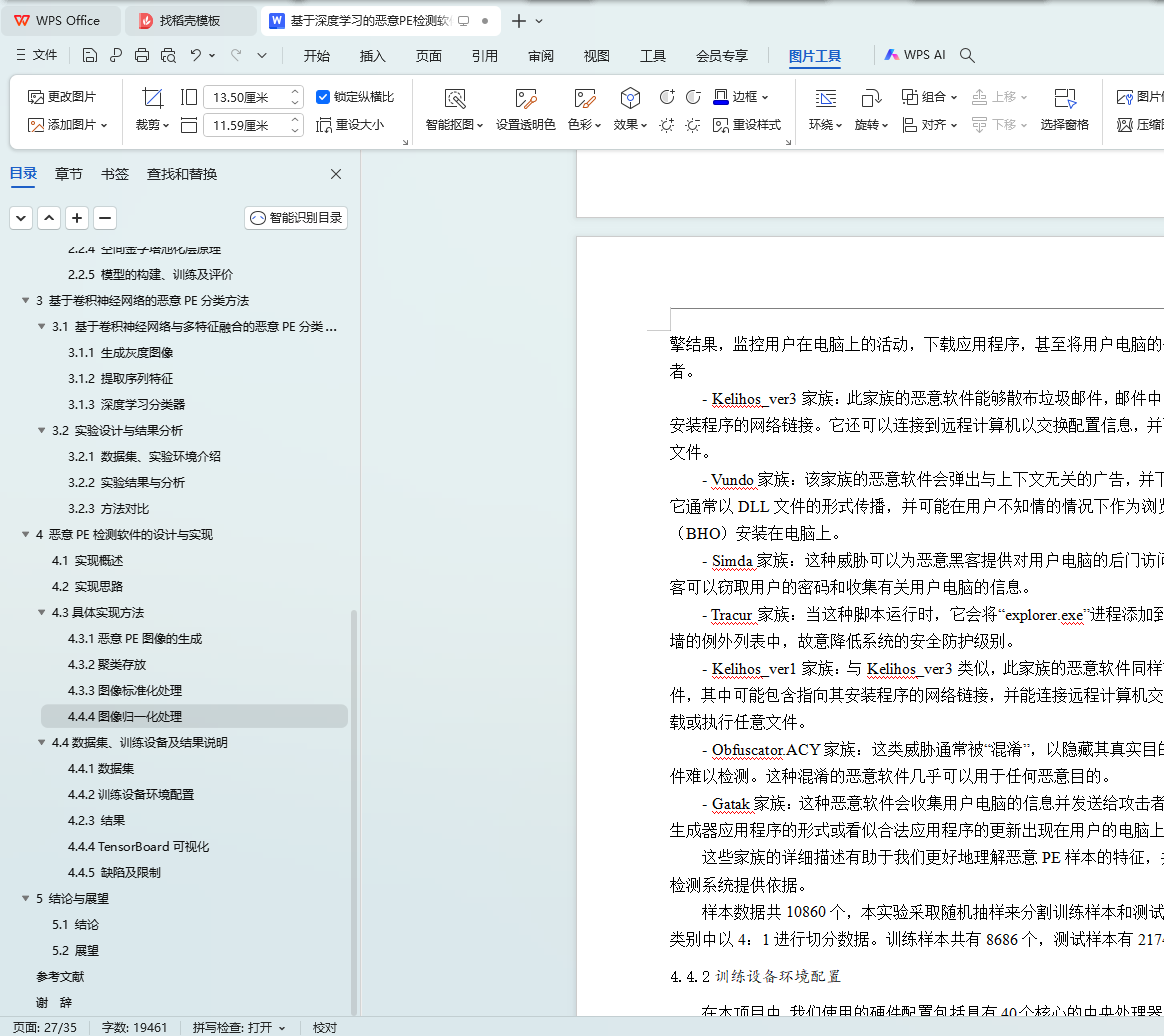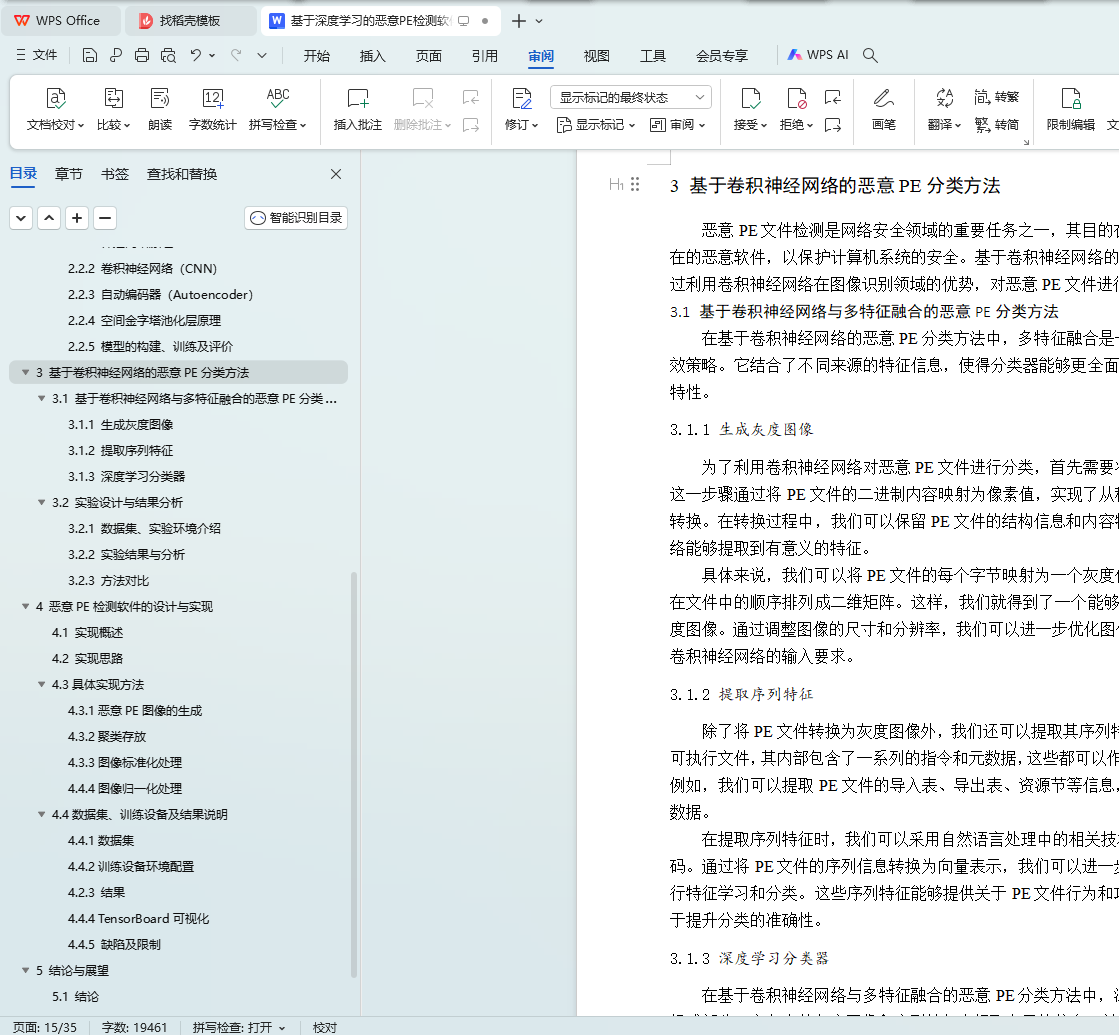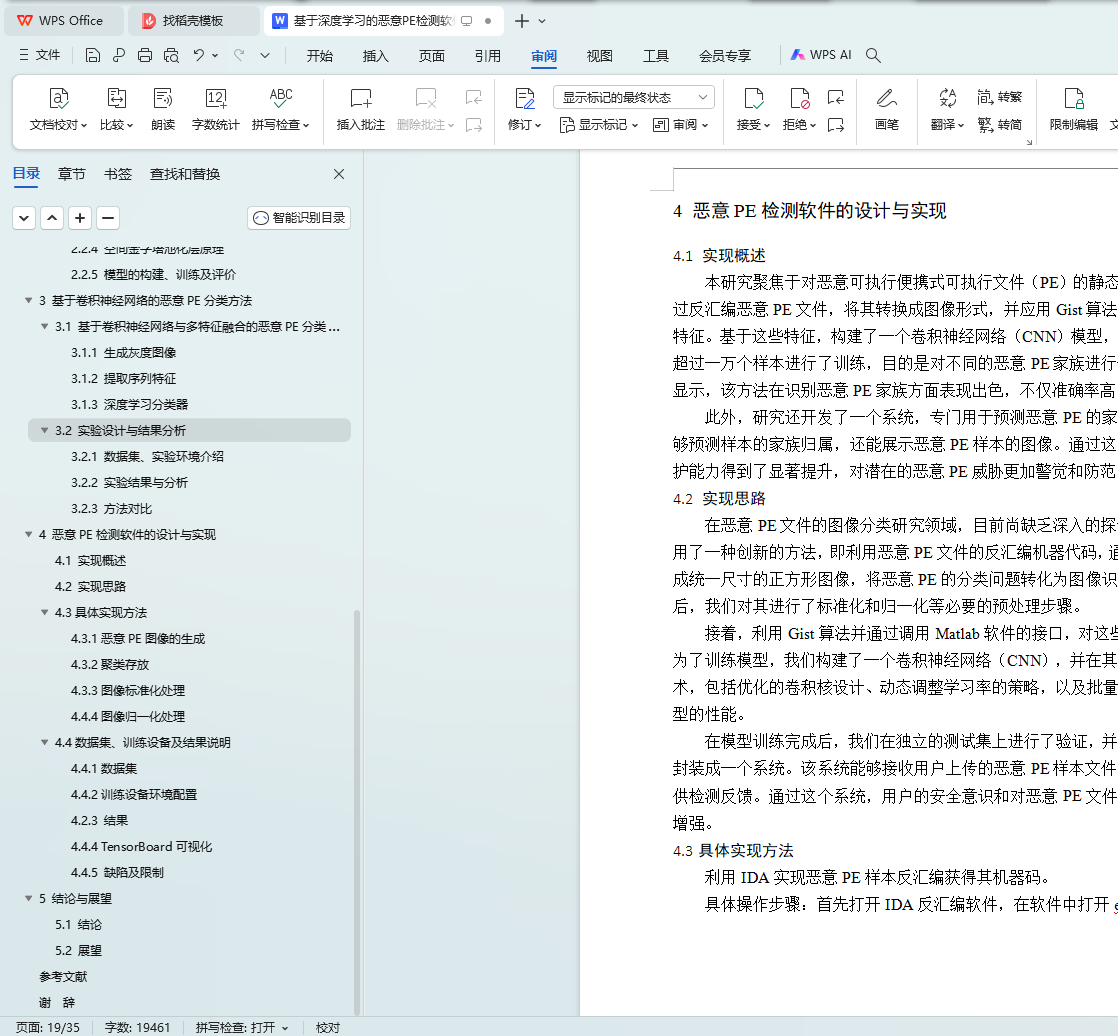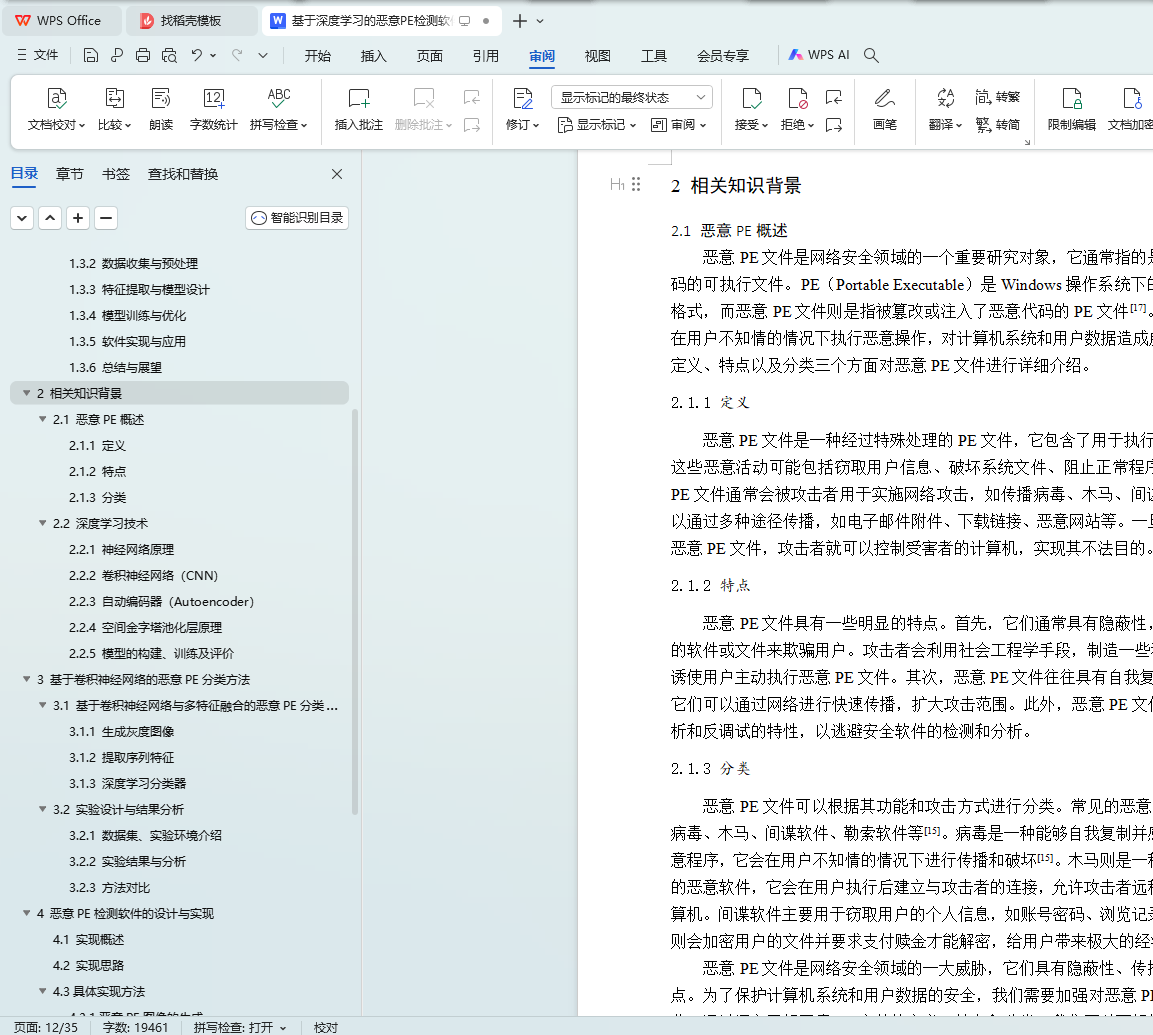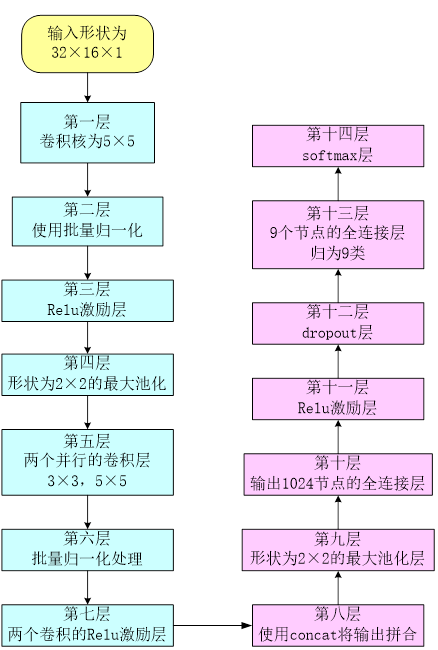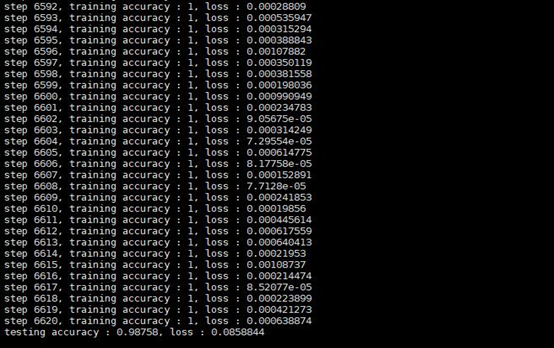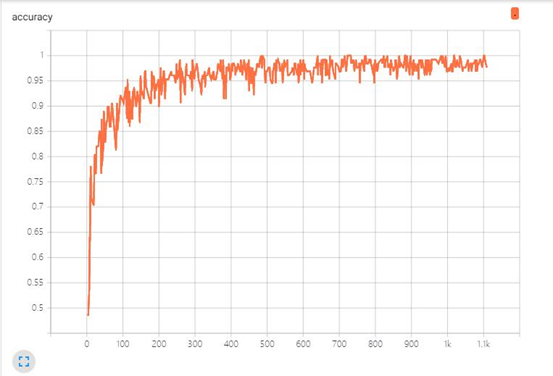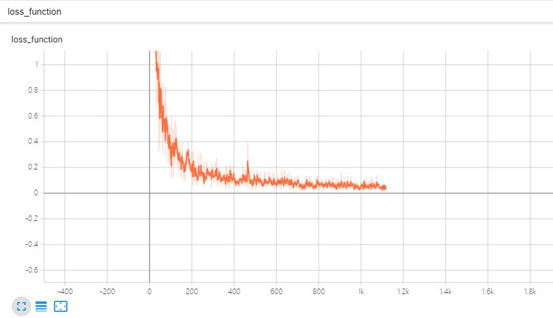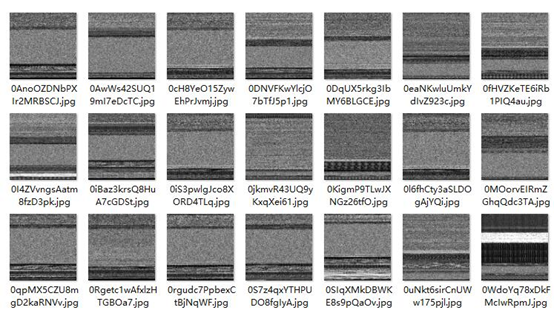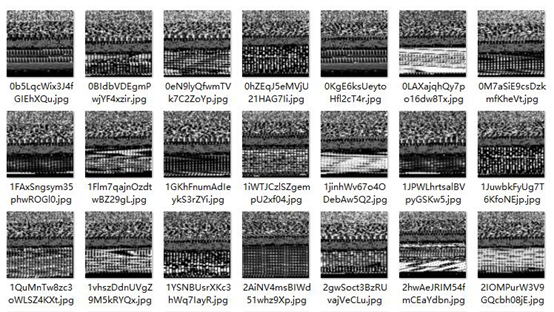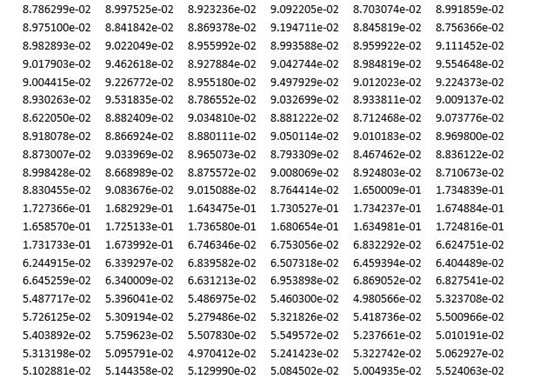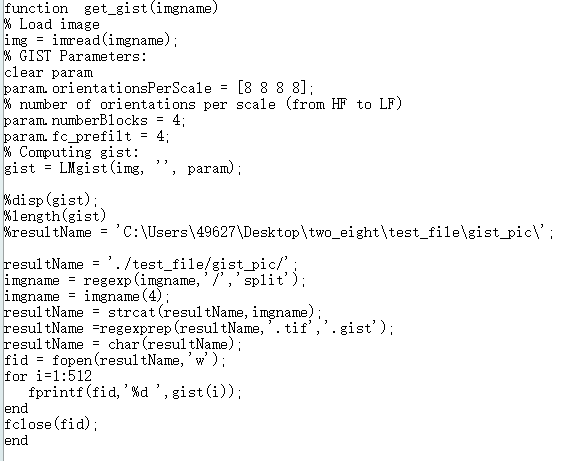摘 要
随着网络安全领域对恶意软件检测技术的迫切需求,结合深度学习在特征提取和行为分析方面的优势,本研究旨在设计与实现一个能够高效识别恶意PE文件的软件。PE(Portable Executable)文件作为Windows操作系统下的一种可执行文件格式,其安全性对系统防护至关重要。
本文提出的软件通过构建卷积神经网络(CNN)模型,有效提取PE文件的结构和特征信息,实现对恶意文件的准确识别。同时,利用循环神经网络(RNN)模型捕捉PE文件中指令序列和API调用序列的行为特征,以深入分析文件行为,并作出相应判断。软件运行于Ubuntu系统,采用Python 3.6作为开发语言,并依赖于numpy、tensorflow、pyqt5、cv2等库。通过设计简洁明了的人机界面,为用户提供了便捷的操作体验。实验结果表明,该软件能够高效识别并检测出包括病毒、木马、勒索软件等在内的多种恶意行为,检测准确率达到98%,召回率为96%,F1值为97%。此外,通过混淆矩阵和ROC曲线进一步验证了模型的性能。本研究的成果为网络安全防护提供了有力支持,并为相关领域的学者和从业者提供了有益的参考。
关键词:深度学习;卷积神经网络;循环神经网络;恶意PE文件检测;文件行为分析
ABSTRACT
With the urgent need for malware detection technology in the network security field, combining the advantages of deep learning in feature extraction and behavior analysis, this study aims to design and implement a software that efficiently identifies malicious PE files. As an executable file format under the Windows operating system, its security is critical for system protection.
The software proposed in this paper builds the convolutional neural network (CNN) model to effectively extract the structure and feature information of PE files, and realize the accurate identification of malicious files. At the same time, the recurrent neural network (RNN) model is used to capture the behavioral characteristics of the instruction sequence and the API call sequence in PE files, so as to deeply analyze the behavior of the file and make corresponding judgments. The software runs on the Ubuntu system with Python 3.6 as the development language and relies on libraries of numpy, tensorflow, pyqt 5, cv 2, etc. Through the design of a simple and clear man-machine interface, it provides users with a convenient operation experience. The experimental results show that the software can efficiently identify and detect a variety of malicious behaviors including viruses, Trojan horses, ransomware, etc., with a detection accuracy of 98%, a recall rate of 96%, and an F1 value of 97%. Furthermore, the performance of the model was further validated by using the confusion matrix and the ROC curves. The results of this study provide strong support for network security protection, and provide a useful reference for scholars and practitioners in related fields.
Key words: deep learning; convolutional neural network; recurrent neural network; malicious PE file detection; file behavior analysis
目 录
摘 要
ABSTRACT
1 引言
1.1 研究背景与意义
1.1.1 研究背景
1.1.2 研究意义
1.2 国内外研究现状 2
1.2.1 国内研究现状 2
1.2.2国外研究现状
1.2.3发展趋势 3
1.3 技术路线
1.3.1 技术引线规划
1.3.2 数据收集与预处理 4
1.3.3 特征提取与模型设计 4
1.3.4 模型训练与优化
1.3.5 软件实现与应用 5
1.3.6 总结与展望
2 相关知识背景
2.1 恶意PE概述
2.1.1 定义
2.1.2 特点
2.1.3 分类
2.2 深度学习技术
2.2.1 神经网络原理
2.2.2 卷积神经网络(CNN)
2.2.3 自动编码器(Autoencoder)
2.2.4 空间金字塔池化层原理
2.2.5 模型的构建、训练及评价
3 基于卷积神经网络的恶意PE分类方法
3.1 基于卷积神经网络与多特征融合的恶意PE分类方法
3.1.1 生成灰度图像
3.1.2 提取序列特征
3.1.3 深度学习分类器
3.2 实验设计与结果分析
3.2.1 数据集、实验环境介绍
3.2.2 实验结果与分析
3.2.3 方法对比
4 恶意PE检测软件的设计与实现
4.1 实现概述
4.2 实现思路
4.3具体实现方法
4.3.1恶意PE图像的生成 14
4.3.2聚类存放
4.3.3图像标准化处理
4.4.4图像归一化处理
4.4数据集、训练设备及结果说明
4.4.1数据集
4.4.2训练设备环境配置
4.2.3 结果
4.4.4 TensorBoard可视化 22
4.4.5 缺陷及限制 23
5 结论与展望 24
5.1 结论 24
5.2 展望 24
参考文献
谢 辞 27
